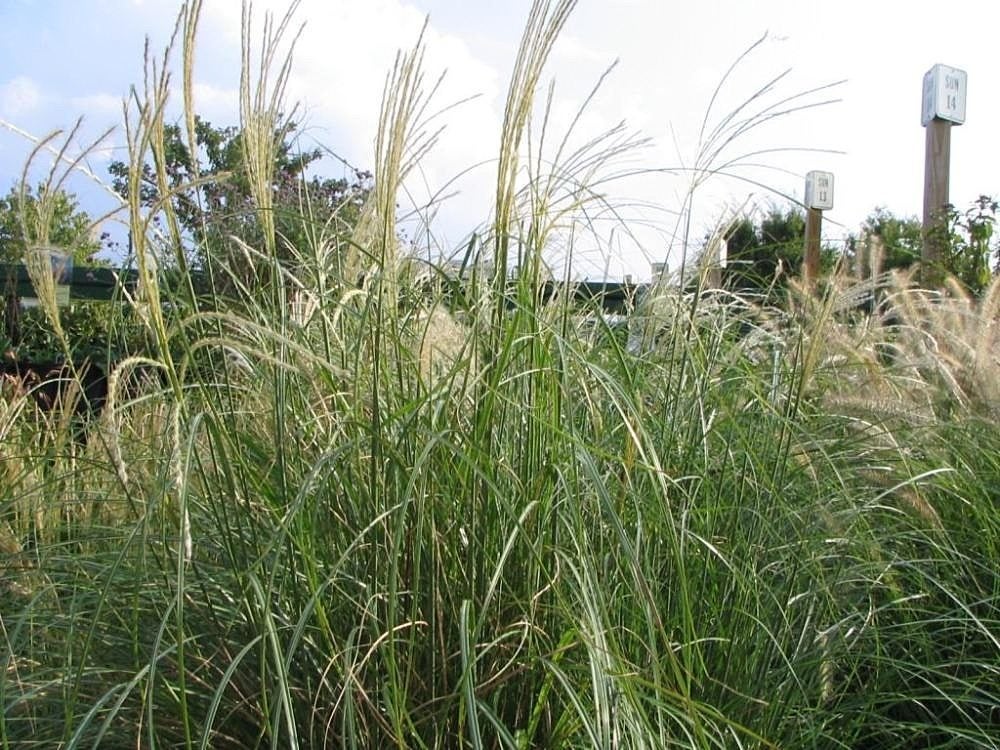What Is Adagio Grass: Tips For Growing Adagio Maiden Grass


Who doesn't love maiden grass? Ornamental grass lovers usually have one or more varieties in their collection. Adagio is an outstanding maiden grass with low maintenance and exceptional tolerance for a variety of conditions. Growing Adagio maiden grass provides winter interest as well as drought resistance and erosion control. Plus, its long bloom period enhances the garden with the feathery pink blooms.
What is Adagio Grass?
Choosing ornamental grasses can be difficult due to the many sizes, forms and specific needs. Miscanthus ‘Adagio’ care is minimal, allowing the gardener to enjoy the beautiful plumes without spending a lot of time on the plant. Arching a graceful 3 to 4 feet (.91 to 1.2 m.), the lovely grass is a dwarf maiden grass. Mature plants can have dozens of airy plumes starting out pink and fading to white. The foliage is also a standout. Blades are slender, silver green and turn orange, burgundy and gold in fall. The plant is also known as Chinese or Japanese silver grass due to the spectacular foliage tones. An Asian native, it has adapted readily to many regions of the United States with a USDA zone range of 5 to 9. The clumping form produces a fountain of leaves topped from summer to winter with the attractive plumes. The feathery inflorescences persist in winter, turning beige and dry, seed heads of interest to several species of wild birds.
How to Grow Adagio Maiden Grass
This plant prefers full sun to part shade. However, in areas with less than 6 hours of sunlight the plant will tend to get floppy and blooms will diminish. Almost any soil from moist clay to dry, sandy compositions are acceptable. While the plant can tolerate short periods of drought, best growth comes in a moist location. Adagio spreads through rhizomes but usually keeps a tidy habit as it grows. In some gardens, the plant may become invasive and will self-seed. The seedlings are one way to grow more of this attractive plant but division is another. Divide plants in winter when they are dormant. Dig up the root mass and cut the plant into 2 or 3 sections, each equipped with roots.
Miscanthus ‘Adagio’ Care
Adagio is useful in large containers, mass plantings or as single specimens. The sunlight filtering through the foliage creates a bold, dazzling effect. The pests that primarily affect the grass are mealybugs, spider mites, aphids and fungus gnat larvae. Usually, these do not cause significant damage. Anthracnose, a disease of many types of plants, may cause foliar damage. One task that keeps the plant looking its best is removing the old foliage prior to new blade arrival. In late winter, gather all the foliage into a net of string, much like a ponytail, and neatly whack it off. This allows the silvery new growth to shine at its best. Adagio maiden grass requires little other special care. A nice organic mulch around the roots will protect plant roots growing in marginally cold regions.
Sign up for the Gardening Know How newsletter today and receive a free copy of our e-book "How to Grow Delicious Tomatoes".

Bonnie Grant is a professional landscaper with a Certification in Urban Gardening. She has been gardening and writing for 15 years. A former professional chef, she has a passion for edible landscaping.